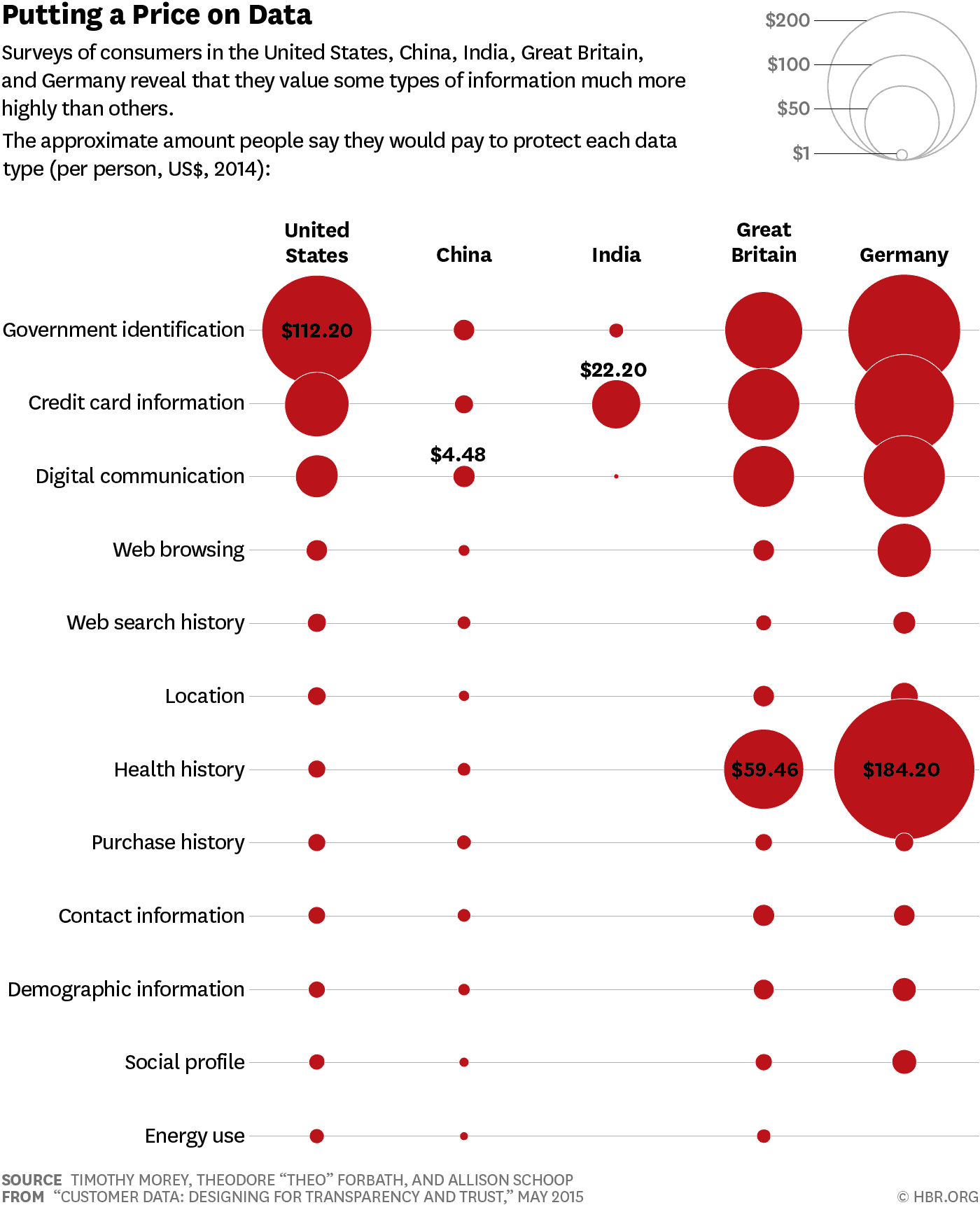As third-party cookies meet their demise, collecting consumer marketing data is more challenging than ever. How do you gain consumer data insights ethically, abiding by GDPR and with genuine user consent?
It’s no secret that consumers are concerned about data privacy, and understandably so. No one wants their private information spread across the internet or sold off to unknown third parties. Does this make consumer data collection for marketing nearly impossible?
According to recent research, no. Contrary to what you might expect, Datascientest finds over 80% of consumers are willing to share their personal data for personalised experiences. The caveat? Brands must handle their information transparently and responsibly.
This presents a powerful opportunity for marketers who prioritise trust and ethical practices.
In this article, we explore:
- Consumer attitudes towards sharing their data
- How consumer data in marketing can drive meaningful connections
- Real-world examples of ethical consumer marketing data collection (and pitfalls to avoid)
- Actionable strategies for collecting and using data with integrity
Understanding consumer data in marketing: What is data-driven marketing?
Data-driven marketing uses consumer data to inform and personalise marketing strategies, helping brands deliver targeted messages and experiences. But what exactly is consumer data?
At its core, consumer data for marketing is information collected from individuals via websites, social media platforms, mobile apps, emails and other digital systems.
It can include personally identifiable information (PII), such as names or email addresses, as well as non-PII like browsing habits and location data.
What are the 4 types of customer data used in marketing?
There are four main types of consumer data used in marketing:
- Basic data: Basic data, or identity data, provides insights into your audience as individuals. This includes information such as names, email addresses, gender identity and demographics like age, occupation and income.
- Interaction data: Interaction data, or engagement data, focuses on how audiences interact with your brand across touchpoints. Metrics like website visits, click-through rates (CTR), social media interactions and email engagement reveal patterns in audience behaviour, providing insights into campaign performance.
- Behavioural data: Behavioural data hones in on specific customer actions, such as purchase history, time spent on site, or subscription renewals.
- Attitudinal data: Attitudinal data captures customer sentiment, such as feedback from reviews, surveys and in-person interactions.
How can consumer data help marketing?
By leveraging insights from customer data, you can create more targeted, engaging and impactful campaigns. Here’s how:
- Identify key customer segments: Consumer marketing data helps you segment your audience to identify your most valuable customer groups. With this understanding, you can tailor your marketing efforts to resonate with the right people.
- Personalise customer experiences: Data allows for hyper-personalised shopping experiences. By collecting first- and zero-party data, you can create dynamic, timely recommendations.
- Maintain engagement and prevent churn: Behavioural data can flag disengaged customers before they leave, so you can address issues promptly, boosting retention rates.
The state of consumer willingness to share data
Consumers today are more willing to share their data than ever before — but only under the right conditions. Four in five consumers are prepared to share personal information if it enables personalised experiences, and 83% are more likely to do so when brands are transparent about how their data will be used.
The willingness to share data stems from a clear value exchange. For example, financial incentives like discounts and loyalty rewards are a particularly effective value exchange, with over 90% of consumers valuing coupons as a trade-off for their data.
Fostering a sense of community is another method to motivate data-sharing. 55% find connecting with like-minded people a valuable data exchange. This number varies across generations, with 68% of Gen Z respondents (compared to 38% of Boomers) feeling more inclined to share data when it connects them with a community.
Another aspect to consider is that some data is more sensitive — requiring a higher value exchange — than others. Government IDs, credit card information and health history are higher privacy priorities than less confidential information like social media profiles and demographics.

How can you collect and use customer data ethically?
Building trust with consumers starts with ethical data practices that prioritise transparency, consent and control. Here are expert insights on how to navigate ethical data collection effectively.
Transparency
Clear communication is vital. Create privacy policies written in plain language, explaining what data you collect, why and how it will be used. Help your customers understand the benefits of sharing. Will they get access to exclusive deals, for example? Or will you present them with more of the content they like?
If you share information with third parties, tell them that and explain your reasons for doing so.
We communicate upfront about what data is collected and why, ensuring users understand the value they’re receiving. We limit data-sharing by partnering with one local expert per market, giving users control over who has access to their information and keeping their personal data secure…
This privacy-first approach—focusing on direct value to users rather than data-sharing to either more people or to the highest bidder—has established ez Home Search as a trusted alternative to other platforms, demonstrating that prioritising privacy creates both engagement and loyalty.
GDPR-compliant platforms like Wide Angle Analytics make it easier to provide clear explanations about how your data practices meet regulatory standards.
Consent
Consent should be meaningful and freely given. Avoid dark patterns that manipulate users into sharing data. Instead, implement double opt-ins and consent management tools.
We recently ran an educational campaign where patients could select topics they were interested in, such as mental health, nutrition or lifestyle medicine. This opt-in system allowed them to receive targeted advice while knowing their personal data was secure.
This choice not only increased engagement by 30% but also encouraged more patients to reach out, knowing their preferences would be honoured. Patients want relevant information, but not at the cost of their privacy.
To understand more about GDPR marketing consent, read the full guide here.
Control and choice
Empower customers by offering preference centres where they can manage their communication and data-sharing preferences.
We implemented a preference centre, enabling users to select what types of content and updates they wish to receive. This opt-in model increased our email engagement rates by 30% and reduced unsubscribe rates.
Anonymised data
For truly privacy-focused consumer marketing data insights, anonymised data offers a secure alternative.
Traditional web analytics often rely on cookies and tracking technologies, creating privacy risks by sharing visitor data with third parties.
In contrast, privacy-focused platforms offer anonymised data solutions. This approach ensures all data remains untraceable to individuals, safeguarding user privacy while delivering actionable insights.
In one of our recent campaigns, we used anonymised data to segment our audience and offer tailored promotions. By ensuring the data remained anonymous, we maintained privacy while still personalising our messages. The result was a 20% increase in engagement, and what really stood out was the positive feedback from customers who felt comfortable with how their data was handled.
By skipping the collection of personal data, privacy-focused platforms like Wide Angle Analytics empower businesses to respect privacy settings and maintain compliance, all while accessing the consumer marketing data insights needed to drive growth — no creepiness, just ethical and effective analytics.
Overcoming challenges in ethical data collection and use
Collecting and using consumer data ethically for marketing is not without its challenges. Below, we explore practical solutions to address three common hurdles.
Problem: Gaining explicit consumer consent without disrupting the user experience is difficult
Poorly configured cookie banners interrupt online browsing experiences. Not only can they be annoying, but when poorly configured, they don’t clearly indicate how to opt out. The result is ‘consent fatigue’: users blindly accept cookies whether they wish to or not.
Studies show that half of US consumers accept all cookies despite privacy concerns, often to avoid disruptive prompts. This trend is strongest among younger generations: the majority (62%) of 18-29-year-olds are willing to accept all cookies. Those 65+ were the most discerning, with 64% saying they do not accept all cookies.
Solutions
One good starting point is to offer users to ability to opt-out. Around four in five US consumers would like companies to act more responsibly in providing the option to opt out of cookie tracking. Ironically, 87% say this would make them more likely to opt in.
Using Consent Management Platforms (CMPs) can help streamline the consent process. CMPs centralise user permissions, reduce repetitive pop-ups and offer clear information about consumer marketing data usage. Advanced platforms even synchronise consent across devices, creating a seamless experience.
We've embraced a privacy-by-design approach, making data protection central to every campaign from the start. A prime example is our Consent Management Platform (CMP) implementation, which puts customers in control of their data preferences. This system has proven particularly effective, leading to a 13% increase in overall engagement and 29% higher form completion rates.
Problem: Storing and securing consumer data responsibly is challenging
Data breaches are a common concern for consumers and brands. Consumers want to know their data is safe. Equally, brands need to feel assured their business won’t be negatively impacted by a data breach, with risks like phishing, malware and unauthorised access threatening customer trust and potentially exposing business-critical information.
Solutions
There are a tonne of controls you can use to safeguard sensitive information. Common options include:
- Multi-factor authentication (MFA): Combining passwords with additional verification requirements, like biometrics or one-time codes, avoids account compromises.
- Access controls: Access control lists (ACLs), role-based access control (RBAC) and privileged access management (PAM) are examples of access controls, which ensure that only authenticated users can access confidential data.
- Encryption: By encrypting data, you make it unreadable, even if unauthorised access occurs.
- Data masking and erasure: Data masking conceals specific data to safeguard privacy. Meanwhile, data erasure ensures data is deleted once no longer required.
Problem: Navigating GDPR and other privacy regulations is complex
Complying with GDPR and similar regulations can be overwhelming, especially for businesses with limited resources. GDPR requires transparency, data minimisation and consumer rights management. And it’s only one of many international regulations safeguarding user privacy.
Solutions
Here are some ways to ensure GDPR compliance:
- Create a comprehensive data protection framework covering consent, privacy-by-design principles and clear policies.
- Conduct regular audits and training to ensure ongoing compliance.
- Use tools that focus on audience segments instead of individuals to balance personalisation with privacy.
- Provide transparent information on how consumer marketing data is collected and used.
- Consult a legal professional for guidance on GDPR compliance.
We use GDPR-compliant tools that allow us to look at audience segments rather than tracking individuals. This means we can personalise content for groups without compromising individual data, resulting in a 25% increase in user retention over six months. By keeping our data collection focused and purposeful, we build campaigns that feel relevant and trusted.
Real-world examples of ethical data collection
Balancing personalisation with privacy is no easy feat. Some brands are doing it right. Others, however, have faced repercussions for failing on the data privacy front.
Here are two examples: one of data protection excellence, one of it going very wrong.
The good: Tapestry’s customer-centric strategy
Tapestry, the parent company of Coach, Kate Spade and Stuart Weitzman, excels in using data ethically to personalise experiences.
By combining traditional customer data with immersive research like surveys, in-person interviews and even shopping trips, Tapestry developed a deep understanding of its audience. This approach allowed the brand to resonate with new Gen Z and Millennial customers, driving the popularity of styles like the Tabby handbag.
Their transparent and consumer-focused strategy delivered impressive results. Coach grew 6% in early 2024, including 2.5 million new customers in North America, half of whom were Gen Z and Millennials.
The bad: Sky Betting and Gaming’s cookie violation
In stark contrast, Sky Betting and Gaming faced an Information Commissioner’s Office (ICO) reprimand for processing consumer data through advertising cookies without asking for consent.
Sky Betting and Gaming not only collected website visitors’ information but shared it with third-party ad tech companies — all without asking users to accept or reject cookies.
While no deliberate misuse of data was found, the breach was deemed ‘unlawful and unfair’ by the ICO, eroding brand reputation and trust.
Start turning compliance into connection
Consumer trust and consent is no longer optional. When you’re transparent about data use, gain meaningful consent and give consumers control over their information, you’re not just complying with regulations like GDPR and getting valuable insights — you’re also building loyalty that lasts. Ethical data practices, such as anonymised consumer marketing data insights and thoughtful personalisation using freely given first-party data, show your audience you respect their preferences while delivering value. Brands that prioritise trust reap the rewards, with stronger relationships and measurable results. By putting ethics at the centre of your data-driven marketing strategy, you’re not just staying compliant — you’re setting the standard for what great marketing looks like.
Wide Angle Analytics makes it simple to gather meaningful insights without compromising trust. Explore how our privacy-focused website analytics platform helps you maintain GDPR marketing consent while understanding your customers to build stronger connections.





